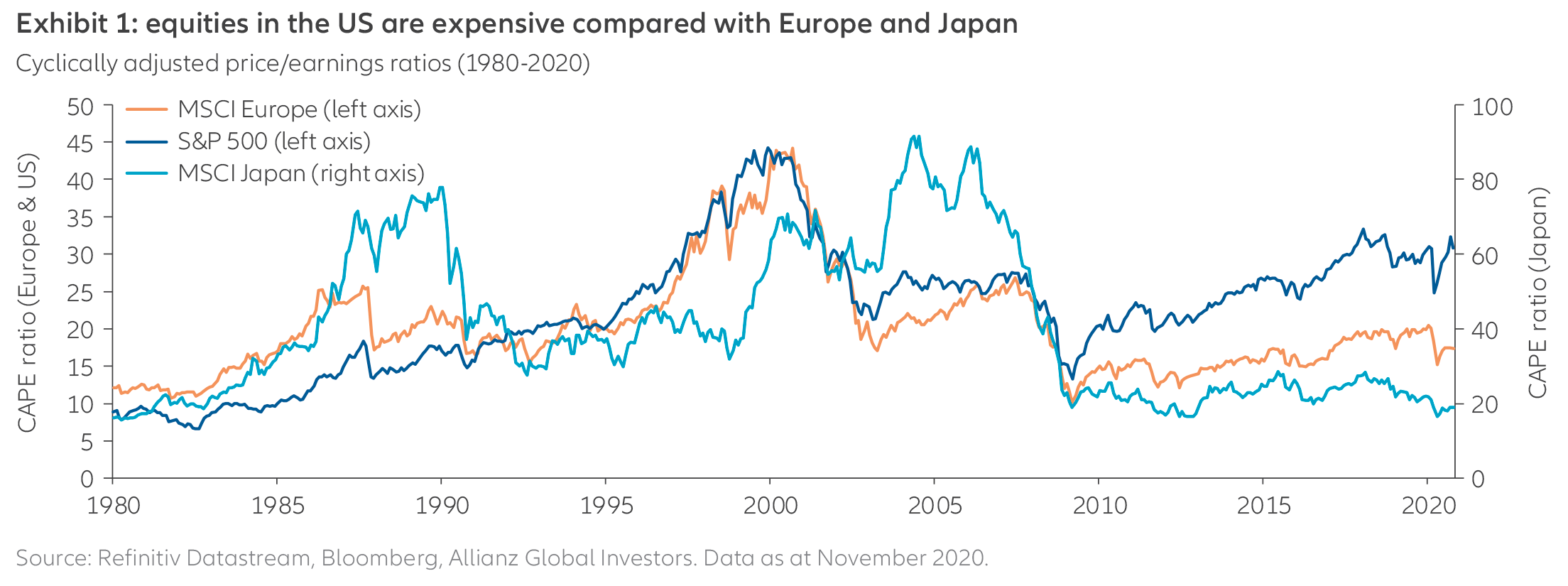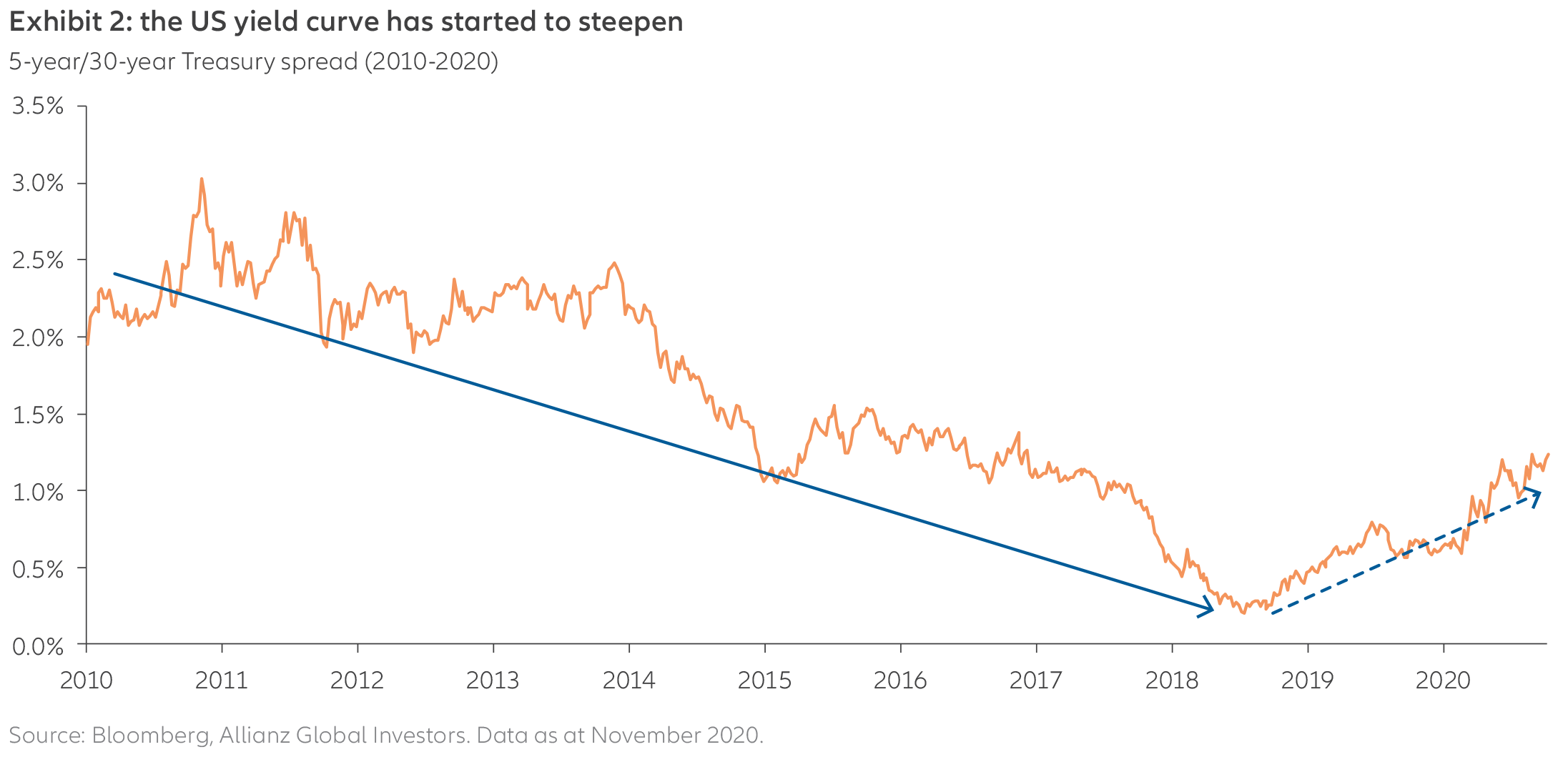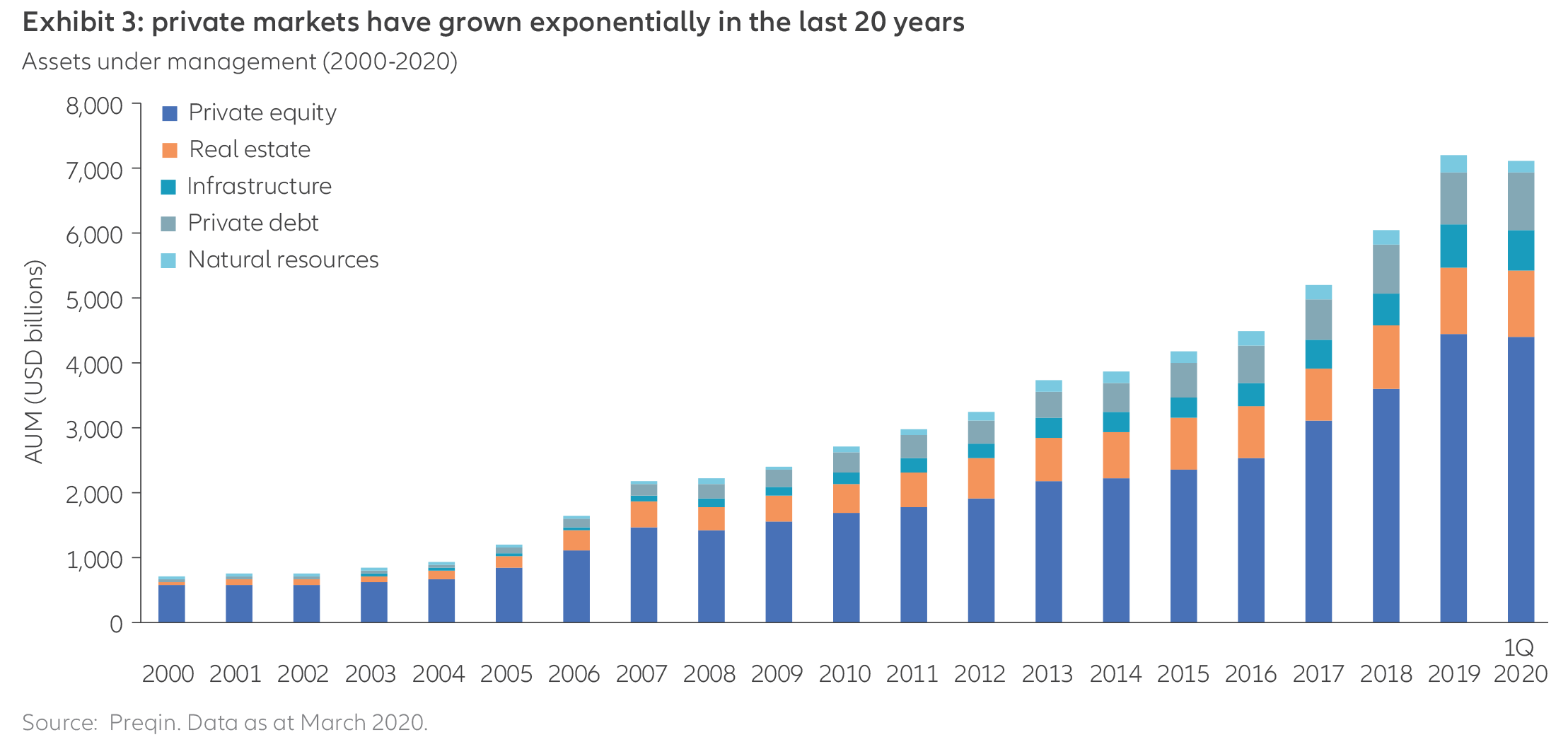2021 outlook: asset class views

Summary
We expect to see more sectors participate in the market’s performance in 2021 – beyond the mega-cap tech stocks that outperformed during the early days of the pandemic. Abundant central-bank liquidity should also create new opportunities within fixed-income markets, and institutional investors may want to tap the private markets to finance the recovery of the real economy.
Equities
The wide adoption of promising Covid-19 vaccines could benefit a range of regions and sectors – beyond the mega-cap US tech firms that have already done well. Likewise, a further deterioration on the Covid front is likely to put pressure on the direction of equity prices. So far, the growth outlook remains unclear and private-sector spending could be suppressed, which will place a greater burden on governments and central banks to provide stimulus. If virus-related fears about economic growth intensify, we expect that the financial markets will expect more stimulus – and begin to price it in.
Yet even now, central banks around the world are continuing to pump liquidity into their economies and trying to encourage investors to move out of “safe” assets and into riskier ones. This has stretched some equity valuations. For example, US equities not only constitute more than 50% of the global equity market in terms of market value, but also appear pricey when judged by most valuation metrics (including price-to- earnings ratios). However, we expect broader participation in the market’s performance in 2021:
- As Exhibit 1 shows, some undervalued regions outside of the US could do well, particularly if we see a global rebound in growth. Look to Europe and emerging markets for potential value cyclical opportunities.
- Consider North Asia and China for secular growth themes, such as China’s investment in new infrastructure and the overall shift towards digitalisation in Asia –including e-commerce, 5G and artificial intelligence.
- The outlook for emerging-market equities is diverse. For example, Poland and Mexico seem to have strong near-term prospects while Russia and Brazil are struggling – though they could be set to rebound when capital begins flowing back in.
- The value style of investing has underperformed and recently sold at a deep discount compared to its growth counterparts, so value cyclicals (including select industrials and financials) could benefit from the global economy’s continued re-opening.
- Under a Biden administration, clean energy sources – such as wind and solar – would likely benefit from increased investment and favourable tax and regulatory policies. Mr Biden has also indicated his support for investing in traditional infrastructure – such as the rebuilding of roads, bridges and airports – as well as technology infrastructure such as 5G and artificial intelligence.

Fixed income
We believe there are attractive opportunities within the fixed-income markets, despite weak macroeconomic fundamentals. Abundant central-bank liquidity continues to provide a favourable backdrop for fixed-income securities in general, and particularly risk assets. As global economic growth recovers, we favour a reflation theme. This may take the form of US “curve steepener” trades (favouring short-term over long-term Treasuries; see Exhibit 2) and allocating risk to spread products (including emerging-market debt, investment-grade corporate bonds and high-yield debt). Another argument in favour of these areas is that central banks – which are price-insensitive buyers of bonds – participate in some of these markets. We are fully aware of the fact that leverage in the corporate sector has significantly increased during this recession. With the US dollar potentially set to fall in value, investors may want to consider underweighting the currency.
The speed and scale of the monetary and fiscal policy measures related to the pandemic have helped reduce the depth and longevity of the global recession, and the global economy has started to recover. But as governments in the developed world continue to provide large-scale stimulus to support their economies, there has been a significant deterioration in government-debt metrics. We believe this means central-bank policy will be generous for the foreseeable future, just as we saw after the 2008-2009 financial crisis. Policy makers want to keep interest rates low to support the recovery; they don’t want to raise rates and risk triggering defaults. Expect to see continued monetary accommodation – including quantitative easing and interest rates that hover near zero (or even move into negative territory) – as policymakers navigate the new macroeconomic landscape.


Private markets
Private markets have enjoyed significant growth in recent decades (see Exhibit 3), in large part because of their ability to provide institutional investors with the potential for excess returns and alternative revenue sources that are largely uncorrelated to public markets. Market dynamics have also been favourable to this asset class. Growing regulatory challenges have put pressure on banks, creating an opportunity for institutional investors to provide capital, and in recent years there has been increased activity from corporations ready to put these funds to work. With growth in average deal values, more companies can rely on funding from investors and stay private for longer. From the outset, the Covid-19 pandemic quickly created stress and uncertainty in markets around the world. As economic activity slowed, many businesses were forced to react to the situation by cutting costs and capital expenditures, and by drawing on credit lines. Governments responded by committing vast sums for emergency financing while banks mainly concentrated on key relationships and core sectors. However, with bank and credit insurer activity expected to tighten, we foresee a growing demand for credit from mid-market corporations and non-core infrastructure sectors – as well as a greater demand for trade finance across all sectors of the economy. Institutional investors can benefit from this development and capture opportunities through private-market investments – and in turn help finance the recovery of the real economy.
Asia is one example of the opportunity available to private- market investors. In a world where growth is in short supply, Asia has a bright outlook for growth thanks to its rising middle class, increasing consumption, strong productivity and rapid pace of digitisation. Moreover, most Asian governments have responded to the Covid-19 crisis by boosting fiscal and infrastructure spending – further fuelling many of these trends. Middle-market companies in Asia stand to be among the primary beneficiaries of these growth drivers, yet many of these firms lack credit. Investors have an opportunity to provide funding to these companies through the private credit markets. This gives investors access to attractive risk-adjusted return potential, proprietary cash flows, and limited correlation to broader fixed-income and equity markets through real assets – as opposed to financial assets.
It is true that globally, some sectors have struggled during this crisis – particularly airports, retail and construction. Yet others that provide essential services to the public have seen a very limited impact on demand (including telecom towers, pharmaceuticals, regulated utilities and data centres) or are expected to experience a sharp rebound (such as healthcare, transport, education and business software) as economies recover. Across multiple sectors, private markets have demonstrated their resilience and ability to add value in an institutional portfolio context – including exhibiting rating volatility that has generally been far lower than the public markets have experienced.
The pace of deal activity seems to have regained steam after a slowdown in the first half of 2020. With governments launching new stimulus packages to help support their economies, institutional investors can play a vital role in the post-pandemic recovery. Given the macro environment, we expect a larger set of investment opportunities to emerge while valuation expectations and credit terms return to more reasonable levels.
Active is: Inventing new opportunities
China reaches for the STAR market

Summary
China’s nascent STAR market provides a platform for the technology and science firms that increasingly underpin the country’s growth story.
Key takeaways
|





